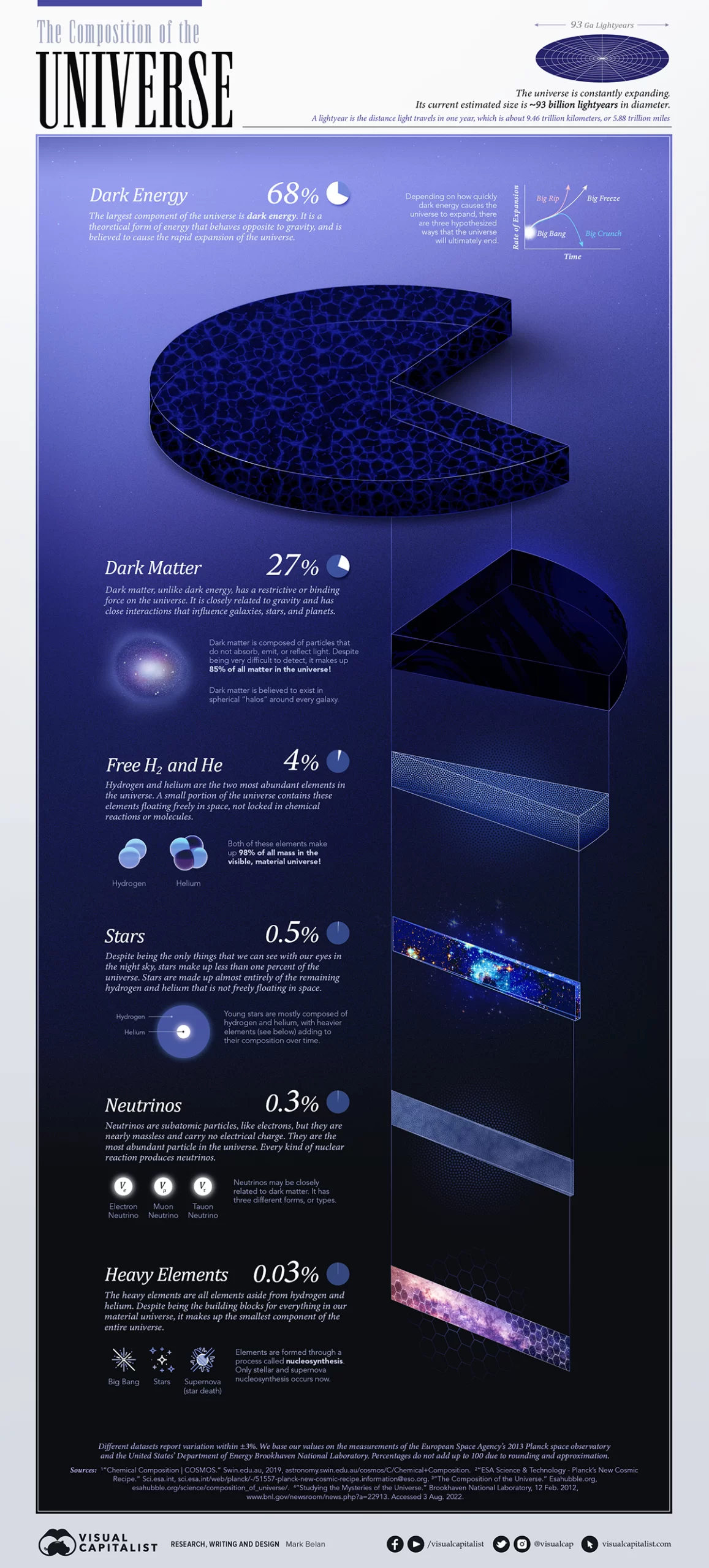MARKETS
The Inflation Factor: How Rising Food and Energy Prices Impact the EconomyRanked: The Most Popular Fast Food Brands in AmericaRanked: America’s Best States to Do Business InVisualizing Major Layoffs At U.S. Corporations3 Reasons for the Fertilizer and Food Shortage
TECHNOLOGY
iPhone Now Makes Up the Majority of U.S. SmartphonesVisualized: The State of Central Bank Digital CurrenciesThe Evolution of Media: Visualizing a Data-Driven Future33 Problems With Media in One ChartThe Top Downloaded Apps in 2022
MONEY
Mapped: The World’s Billionaire Population, by CountryCharting the Relationship Between Wealth and Happiness, by CountryMapped: A Snapshot of Wealth in AfricaMapped: The Wealthiest Billionaire in Each U.S. State in 2022Visualized: The State of Central Bank Digital Currencies
HEALTHCARE
Visualizing the Relationship Between Cancer and LifespanExplainer: What to Know About MonkeypoxVisualizing How COVID-19 Antiviral Pills and Vaccines Work at the Cellular LevelMapped: The Most Common Illicit Drugs in the WorldVisualizing The Most Widespread Blood Types in Every Country
ENERGY
All Electric Semi Truck Models in One GraphicThe Inflation Factor: How Rising Food and Energy Prices Impact the EconomyVisualizing China’s Dominance in the Solar Panel Supply ChainVisualizing 10 Years of Global EV Sales by CountryWhich Countries Produce the Most Natural Gas?
MAPS
Mapped: Countries With the Highest Flood RiskRanked: The 20 Countries With the Fastest Declining PopulationsIconic Infographic Map Compares the World’s Mountains and RiversMapped: A Decade of Population Growth and Decline in U.S. CountiesMapped: The State of Global Democracy in 2022
MINING
Mapped: The 10 Largest Gold Mines in the World, by ProductionThe 50 Minerals Critical to U.S. SecurityVisualizing China’s Dominance in Clean Energy MetalsThe Periodic Table of Commodity Returns (2012-2021)Visualizing the Abundance of Elements in the Earth’s Crust
GREEN
Mapped: Countries With the Highest Flood RiskVisualizing China’s Dominance in the Solar Panel Supply ChainAll the Contents of the Universe, in One GraphicExplained: The Relationship Between Climate Change and WildfiresVisualizing 10 Years of Global EV Sales by Country
FEATURED COMPANIES green check-mark icon CREATOR PROGRAM REPORTS CHANNELS
MISCAll the Contents of the Universe, in One GraphicPublished 1 month ago on August 19, 2022
By Mark Belan
Graphics/Design:
Mark Belan
Tweet
Share
Share
Reddit
Email
Infographic showing the composition of the universe
▼ Use This Visualization
All the Contents of the Universe, in One Graphic
Scientists agree that the universe consists of three distinct parts: everyday visible (or measurable) matter, and two theoretical components called dark matter and dark energy.
These last two are theoretical because they have yet to be directly measured—but even without a full understanding of these mysterious pieces to the puzzle, scientists can infer that the universe’s composition can be broken down as follows:
Component Value
Dark energy 68%
Dark matter 27%
Free hydrogen and helium 4%
Stars 0.5%
Neutrinos 0.3%
Heavy elements 0.03%
Let’s look at each component in more detail.
Dark Energy
Dark energy is the theoretical substance that counteracts gravity and causes the rapid expansion of the universe. It is the largest part of the universe’s composition, permeating every corner of the cosmos and dictating how it behaves and how it will eventually end.
Dark Matter
Dark matter, on the other hand, has a restrictive force that works closely alongside gravity. It is a sort of “cosmic cement” responsible for holding the universe together. Despite avoiding direct measurement and remaining a mystery, scientists believe it makes up the second largest component of the universe.
Free Hydrogen and Helium
Free hydrogen and helium are elements that are free-floating in space. Despite being the lightest and most abundant elements in the universe, they make up roughly 4% of its total composition.
Stars, Neutrinos, and Heavy Elements
All other hydrogen and helium particles that are not free-floating in space exist in stars.
Stars are one of the most populous things we can see when we look up at the night sky, but they make up less than one percent—roughly 0.5%—of the cosmos.
Neutrinos are subatomic particles that are similar to electrons, but they are nearly weightless and carry no electrical charge. Although they erupt out of every nuclear reaction, they account for roughly 0.3% of the universe.
Heavy elements are all other elements aside from hydrogen and helium.
Elements form in a process called nucleosynthesis, which takes places within stars throughout their lifetimes and during their explosive deaths. Almost everything we see in our material universe is made up of these heavy elements, yet they make up the smallest portion of the universe: a measly 0.03%.
How Do We Measure the Universe?
In 2009, the European Space Agency (ESA) launched a space observatory called Planck to study the properties of the universe as a whole.
Its main task was to measure the afterglow of the explosive Big Bang that originated the universe 13.8 billion years ago. This afterglow is a special type of radiation called cosmic microwave background radiation (CMBR).
Temperature can tell scientists much about what exists in outer space. When investigating the “microwave sky”, researchers look for fluctuations (called anisotropy) in the temperature of CMBR. Instruments like Planck help reveal the extent of irregularities in CMBR’s temperature, and inform us of different components that make up the universe.
You can see below how the clarity of CMBR changes over time with multiple space missions and more sophisticated instrumentation.
CMBR Instruments
What Else is Out There?
Scientists are still working to understand the properties that make up dark energy and dark matter.
NASA is currently planning a 2027 launch of the Nancy Grace Roman Space Telescope, an infrared telescope that will hopefully help us in measuring the effects of dark energy and dark matter for the first time.
As for what’s beyond the universe? Scientists aren’t sure.
There are hypotheses that there may be a larger “super universe” that contains us, or we may be a part of one “island” universe set apart from other island multiverses. Unfortunately we aren’t able to measure anything that far yet. Unravelling the mysteries of the deep cosmos, at least for now, remains a local endeavor.
























 BREAKING: US GDP Falls BELOW ZERO: Economy SHRINKS as Inflation Explodes, Recession Odds Hit 74%
BREAKING: US GDP Falls BELOW ZERO: Economy SHRINKS as Inflation Explodes, Recession Odds Hit 74%





